Tears through the Red Sea
andrea frohne
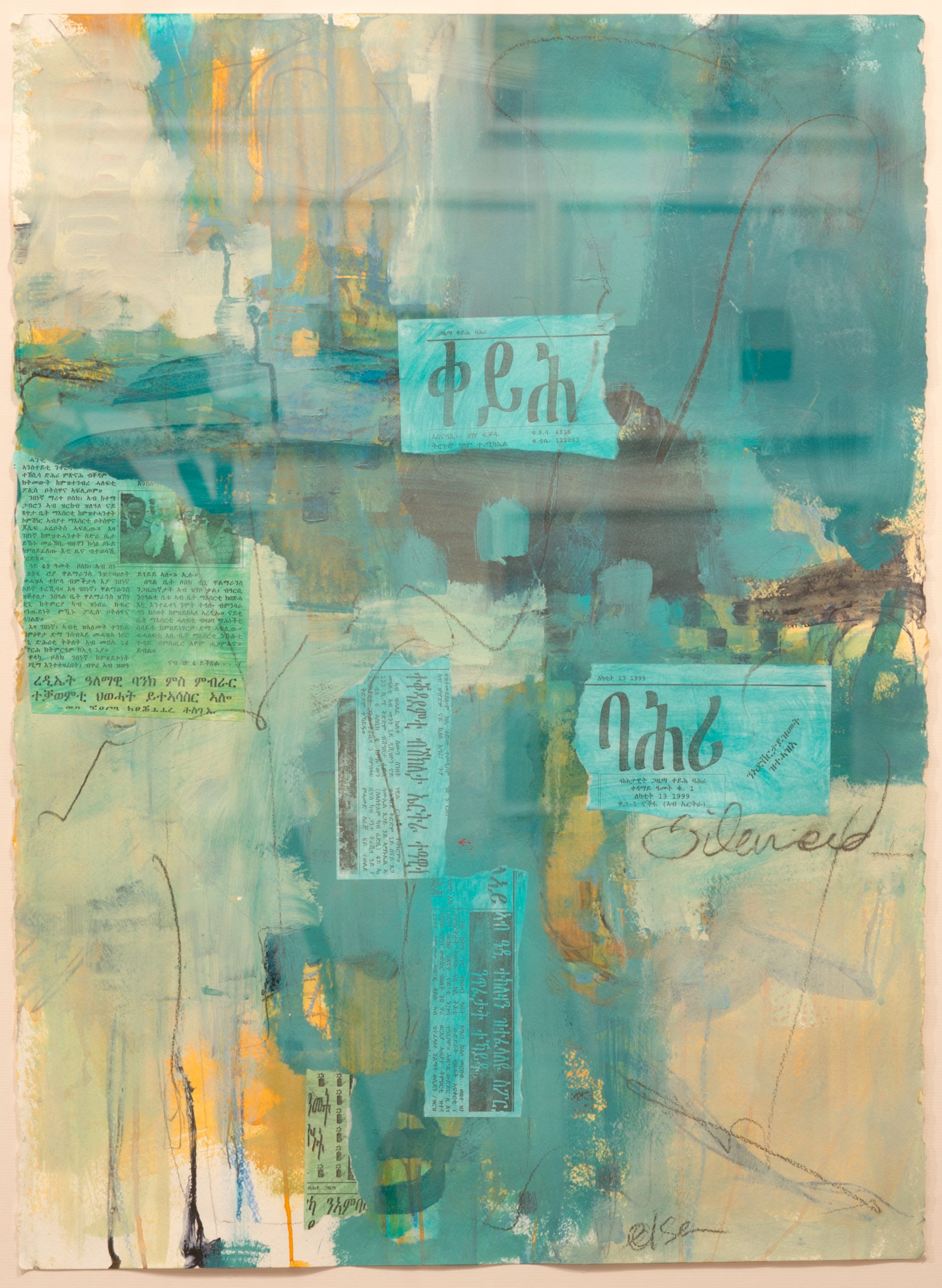
Elsa Gebreyesus (Eritrean, born in Ethiopia, lives in Fairfax, Virginia, USA), Silenced V, 2010, mixed media on paper, 30” x 37”, photograph by Andrea Frohne.

Elsa Gebreyesus (Eritrean, born in Ethiopia, lives in Fairfax, Virginia, USA), Silenced V, 2010, mixed media on paper, 30” x 37”, photograph by Andrea Frohne.

Figure 1: FAPF, front cover of the Mozambican edition of Tanizaki Jun'ichirō’s In Praise of Shadows, 1999, monochrome print, A4.
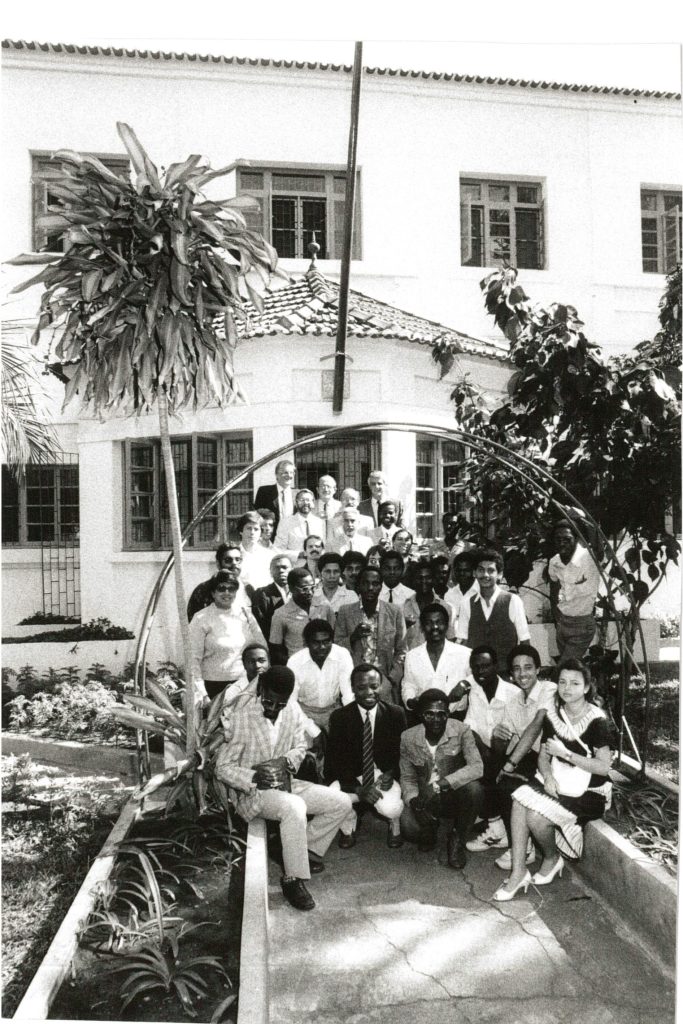
Figure 2: Lucio Carbonara, FAPF teachers and first-year students in front of the architecture institute in Maputo, 1986, photo print.
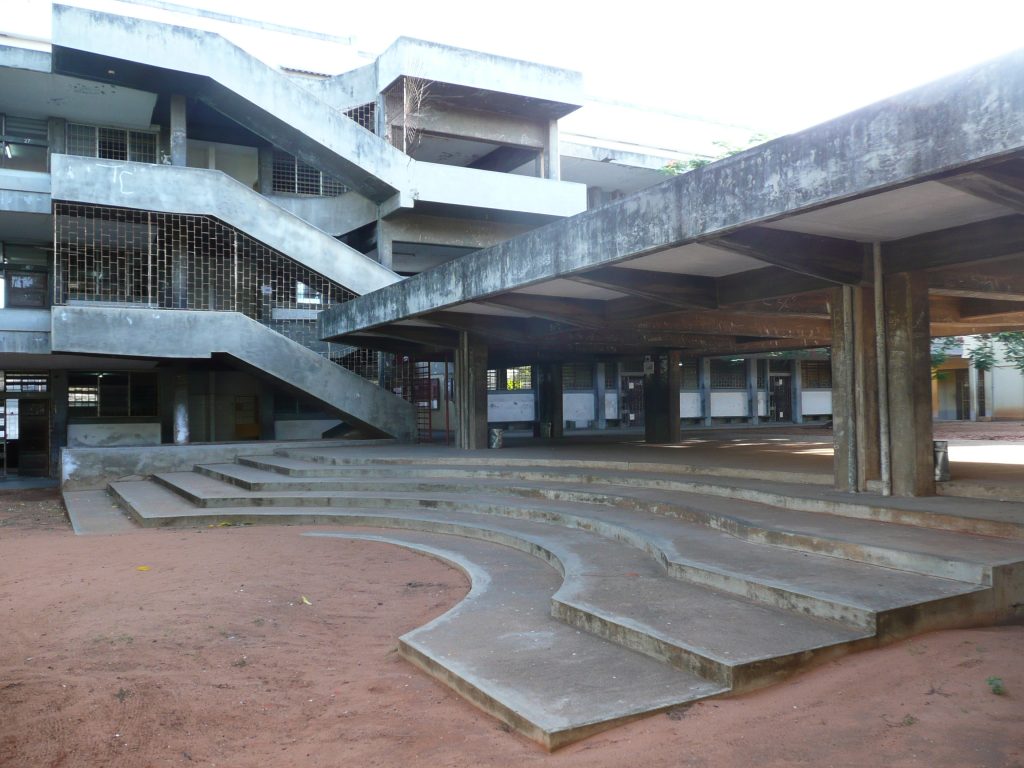
Figure 3: Nikolai Brandes, Escola Secundária da Polana (Forjaz and Tinoco, ca 1973), Maputo, 2012, digital photograph.
The regular, linear and monumental pattern of grand avenues and boulevards and monumental squares do not in fact serve any identifiable use or have a clear meaning for the majority of our population. But they are still being designed and built. [A] productive use of land […] balanced with a regular distribution of market and service centres minimizing transport needs and providing employment could […] create a new […] urban environment. […] With our negative, stagnant or barely positive rates of economic growth against the explosive demographic growth it is vital to find alternatives to classic development strategies. The people of our cities are finding those alternatives by themselves and it is our responsibility as planners and architects to understand their ways and to help them resolve better the spatial problems that they face.[17]The opposition to imported technocratic expertise and directives of international donor agencies and the preference for local solutions had a distinctly disconnective, isolationist component. And yet, as an epistemological project, it was embedded in global discussions. In architecture, site-specific ways of life, architectural styles and building materials received increasing international attention by the 1970s. With the end of the great modernisation narratives, corresponding tendencies found expression in other fields too, first and foremost in social science. Paralleling postcolonial construction research at the FAPF, Mozambique saw the emergence of public intellectuals such as Aquino de Bragança, who viewed the anti-colonial liberation struggle as an incubator for new, practical knowledge about social dynamics. The rediscovery of these specifically Mozambican approaches was essential to the ‘epistemology of the South’, which sparked international interest in the social sciences.[18] Mozambique, however, not only contributed to a global discourse on local knowledge but also made use of geopolitically surprising models. For the editors at FAPF, Tanizaki had apparently raised questions in 1930s Japan that seemed significant for the future of architecture in postcolonial Mozambique.[19] Tanizaki discusses domains in which Japanese products, techniques and cultural practices are superior to Western innovations, from the quality of writing paper to optimising the interior climate of living spaces and the haptic quality of lacquerware crockery. However, he is not only concerned with nostalgia for a past universe. Rather, conservative Tanizaki is concerned about the disappearance of a material culture in which formal design and social practice meaningfully interpenetrate. The motif of shadows that characterises his description of architecture with semi-transparent paper walls and dark alcoves recurs consistently in other miniatures on Japanese society, especially when he declares particular technical and cultural imports from the West to be simply unsuitable to local needs. For example, he accuses the phonograph of cementing a Western understanding of music and sound that underrates pauses (the acoustic equivalent of shadows) in Japanese oral and musical culture. If modern medicine had originated in Japan, he suspects, the bedrooms of hospitals would not be white, but sand-coloured, and thus more beneficial to recovery processes. ‘Here again we have to come off the loser for having borrowed’,[20] he writes. Similarly, Forjaz fears that the ‘systematic adoption of values and forms imported from other cultures and societies’[21] might dramatically worsen the living conditions in Mozambican cities. What Tanizaki and Forjaz have in common is the concern about technological globalisation, which standardises uniform, often unsuitable solutions. But while Tanizaki nostalgically bids farewell to local idiosyncrasies, Forjaz thinks of the local more hopefully as a laboratory for future innovation:
Our role as architects and planners in the Third World is, primarily, to deepen the understanding of the economic, social and cultural characteristics of our society, and their dynamics of change in order to find adequate and necessarily new solutions to our spatial and building problems.[22]Compared to Tanizaki, Forjaz is clearly anti-traditionalist. Genuine and contemporary Mozambican architecture is yet to come:
Traditional societies in our region did not have to answer this scale of problems […]. We have to create now an architecture that expresses our new social order, and there is not much we can take from our architectural traditions. […] Like the cities of Europe […] need their cathedrals and their castles, their walls and great squares; like the typical American city needs its courthouse square and church, we need our tangible signs of an order superior to the tribal and different from the colonial.[23]In Mozambique, the international disconnect caused by extreme economic and political circumstances even invigorated participation in global academic discourses and prompted contributions to global transfers of theory. A particularly unusual publication, this Mozambican edition also highlights the obstacles that continue to exclude African universities from global academic publishing. At the time, the decision to publish Tanizaki fit the search for a genuine path in the field of architecture, and it again relates to current discussions in South Africa and Great Britain about decolonising architectural education. [1] This text was facilitated by a research grant from the German Historical Institute in Rome. [2] See Faculdade de Arquitectura e Planeamento Físico, Publicações FAPF (Maputo: Edições FAPF, ca. 2005). [3] See Jun’ichirō Tanizaki, Em Louvor às sombras, trans. Margarida David e Silva (Maputo: Edições FAPF, 1999). [4] In the year of the translation, Mozambique ranked third to last in the UNDP’s Human Development Index, see ‘Human Development Index’, ed. UNDP (2023). https://hdr.undp.org/data-center/human-development-index#/indicies/HDI.. [5] See José Forjaz, ‘Research Needs and Priorities in Housing and Construction in Mozambique’, Habitat Intl. 9, no. 2 (1985). [6] That is, Western, educated, industrialised, rich and democratic. [7] See Jun’ichirō Tanizaki, In Praise of Shadows, trans. Thomas J. Harper (Stony Creek: Leet's Island Books, 1977), 42.. [8] For an attempt in this direction, see Mark Olweny, ‘Architectural Education in Sub-Saharan Africa: An Investigation into Pedagogical Positions and Knowledge Frameworks’, Journal of Architecture 25, no. 6 (2022). [9] See Aquino de Bragança, ‘Independência sem descolonização: A transferência do poder em Moçambique, 1974 – 1975’, Estudos Moçambicanos 5-6 (1985). [10] See Marina Ottaway, ‘Afrocommunism Ten Years after: Crippled but Alive’, Issue: A Journal of Opinion 16, no. 1 (1987). [11] José Forjaz, Por uma escola de arquitectura não ortodoxa, ca. 1983, handwritten manuscript, FAPF archive, Maputo. [12] Some of these publications were pioneering works on Mozambican architectural history. [13] See Nikolai Brandes, ‘Developing the Late Colonial City: Strategies of a Middle Class Housing Cooperative in Mozambique, 1951–1975’, Cities 130, 103935 (2022), https://doi.org/https://doi.org/10.1016/j.cities.2022.103935. [14] See Udo Kultermann, New Directions in African Architecture (New York: George Braziller, 1969). [15] Nikolai Brandes, ‘“Das Ziel waren Wohnungen für die ganze Bevölkerung.” Ein Gespräch mit dem mosambikanischen Architekten Mário do Rosário, der in Maputo die Umsetzung eines der letzten Wohnungsbauprojekte der DDR im Ausland begleitete’, in Architekturexport DDR. Zwischen Sansibar und Halensee, ed. Andreas Butter and Thomas Flierl (Berlin: Lukas, 2023). [16] The essay first appeared in Arquitrave, the FAPF's student magazine, in 1990; in English translation in an exhibition catalogue in 1999; and finally on the website of Forjaz's architecture firm. I follow the online publication: ‘Between Adobe and Stainless Steel’, José Forjaz Arquitectos, 2021, accessed 6 September, 2023, https://www.joseforjazarquitectos.com/textosen/%E2%80%9C...between-adobe-and-stainless-steel%E2%80%9D. [17] Forjaz, ‘Between Adobe’. [18] See Boaventura Santos, ‘Aquino de Bragança: criador de futuros, mestre de heterodoxias, pioneiro das epistemologias do Su’, in Como fazer ciências sociais e humanas em África. Questões epistemológicas, metodológicas, teóricas e políticas, ed. Teresa Cruz e Silva, João Paulo Borges Coelho, and Amélia Neves de Souto (Dakar: CODESRIA, 2012). [19] This transfer of ideas is ironic in that Japan itself was aggressively building an empire at the time of Tanizaki's stance against Western cultural influence. [20] Tanizaki, In Praise, 12. [21] Forjaz, ‘Between Adobe’. [22] Forjaz, ‘Between Adobe’. [23] Forjaz, ‘Between Adobe’.
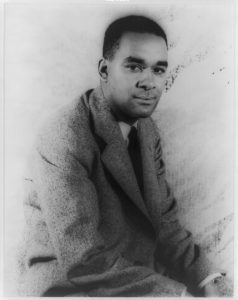
Fig. 01: Carl Van Vechten, Richard Wright, 1943, photograph, Van Vechten Collection at the Library of Congress, https://commons.wikimedia.org/w/index.php?curid=1430629
‘But is there not something missing here?’ asks Wright. ‘Weren’t all these men deeply religious? Christians? Moslems? Buddhists? Hindus? They were. Would they accept working with Red China? Yes, they would. Why? Were they dupes? No, they were desperate. They felt that they were acting in common defense of themselves. Then, is Christianity, as it was introduced into Asia and Africa, no deterrent to Communism?’ He answers his own question quite succinctly: ‘Obviously, religion, and particularly the Christian religion, was no bulwark against Communism’.[1]Among the delegates in Bandung was Kwame Nkrumah, then prime minister of the Gold Coast which was still under British control. Richard Wright had visited him a few years earlier during his first journey through a continental African country, when Wright began to weave his own personal pan-African consciousness spanning both sides of the Atlantic. Nkrumah, together with Sékou Touré from Guinea, Léopold Sédar Senghor from Senegal, Julius Kambarage Nyerere from Tanganyika, Modibo Keïta from Mali and others, was a founding figure of African socialism.[2] All of these leaders, however, insisted on the religious nature of their version of socialism. And they were not afraid to defend their religiosity against Chinese and especially Soviet accusations that they were violating the ‘true teachings’ of Marx and Lenin.[3]
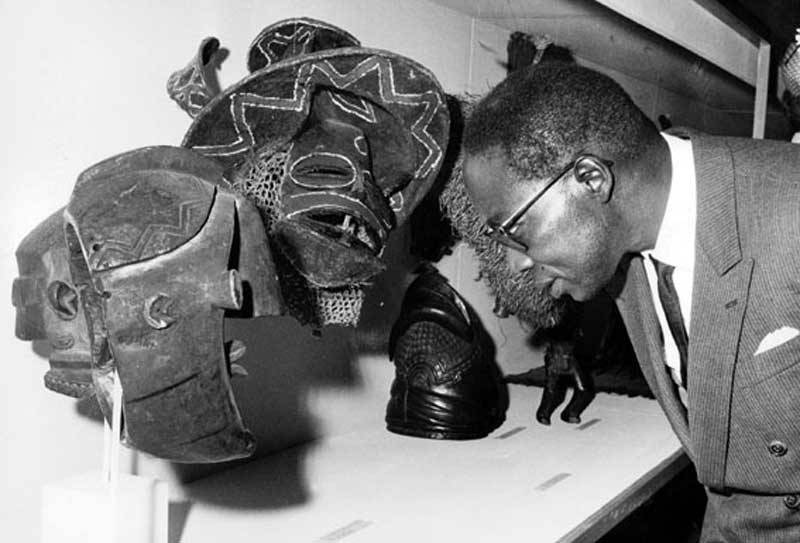
Fig. 02: President Leopold Senghor Viewing African Art at the Musée Dynamique, During the Festival mondial des arts nègres (FESMAN), Dakar, 1966, African Art After Independence, 1957-1977, College of Literature, Science, and the Arts, University of Michigan, https://sites.lsa.umich.edu/maa/research/art-of-a-continent/senghor-dakar-1966/.
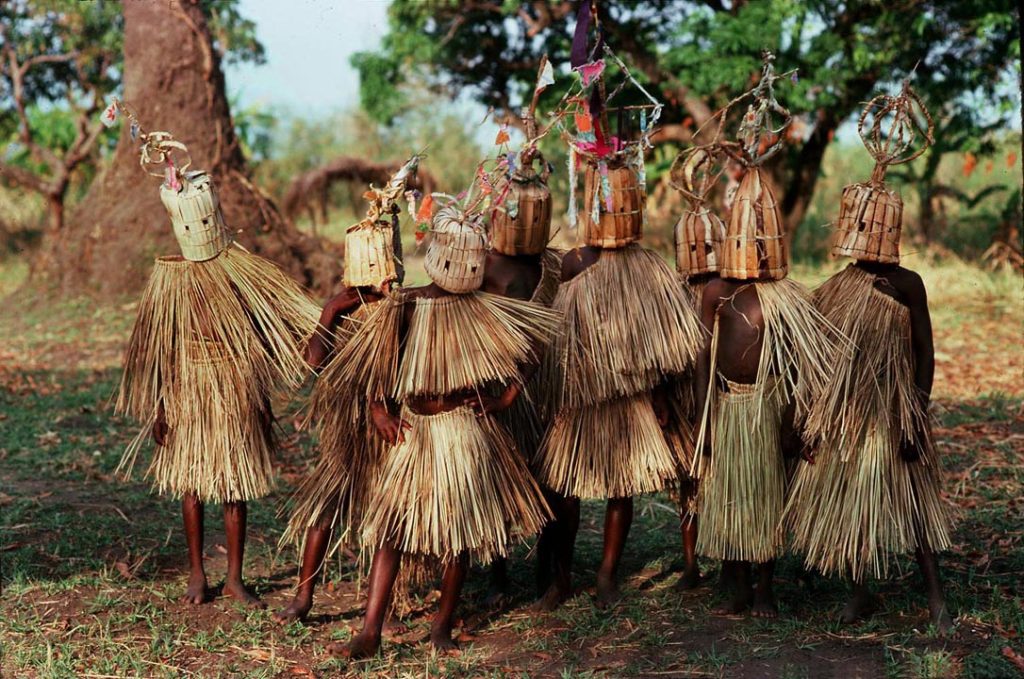
Fig. 03a: Steve Evans, 9–10-year-old boys of the Yao tribe in Malawi participating in circumcision and initiation rites, 2005, Wikimedia Commons, https://commons.wikimedia.org/w/index.php?curid=5246384.
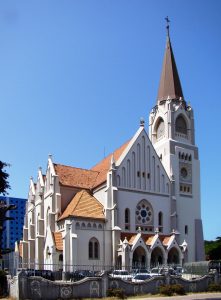
Fig. 03b: Digr, St. Joseph’s Cathedral in Dar es Salaam, 2009, Wikimedia Commons, https://commons.wikimedia.org/w/index.php?curid=38285920.
I think that the beliefs placed in my heart by my grandmother about our ancestors had something to do with my spiritual progress. I believed that there was another life after death because my grandparents live in spirit (even though they are bodily dead). And from this when I heard the story of Christ and God I immediately accepted.[13]Mondlane later added a further thought to his reflection on religion: ‘Our indigenous religion could have remained and continued to thrive if there had not been another which offered better answers to the questions of the future’.[14] In emphasising the ancestral lineage of faith in God, Mondlane sets the indigenous way of life on par with Christianity-as-civilisation. Simultaneously, he concurs that the universal church (or rather, Africanised church and neither a specific national nor denominational church) was best suited to modernisation and national independence. While ancestral religion was seen positively there, it belonged to the past. African scholars and independence-era writers tried hard to counter the Hegelian trope of African a-historicity. Notably, Cheikh Anta Diop, a Senegalese Egyptologist argued in his 1954 thesis Nations Nègres et Cultures that ancient Egyptian civilisation was derived from the same black civilisation as that of West Africa. His contemporary Léopold Senghor pits the concept of Négritude against the French anthropologist Lucien Lévy-Bruhl’s theory of ‘pre-logical mentality’ and similar theories.[15] He also emphasised that African religion was based on both reason and idealist ontology; it touched on life and meaning beyond the everyday, perceiving beauty and searching for the divine in nature.[16] However, he opposed ‘magic’ to ‘animism’ (the Francophone alternative to ‘African Traditional Religion’, not the primitive religion of evolutionary theory). He considered ‘magic’ and particularly the so-called secret societies, or mask societies, who ostensibly practiced it, to be ‘a superstitious deformation, too human’.[17] In the discursive framework of Africanist history, anthropology and theology, ‘religion’ was a pre-condition of ‘civilisation’, which in turn was a pre-condition for independent rule, free of colonial paternalism. Though I am oversimplifying the complex economic and political negotiations of the independence movements, of course, the strategic role of the discursive figure of religion as the basis of civilisation – and thus modernity – must not be underestimated.[18]
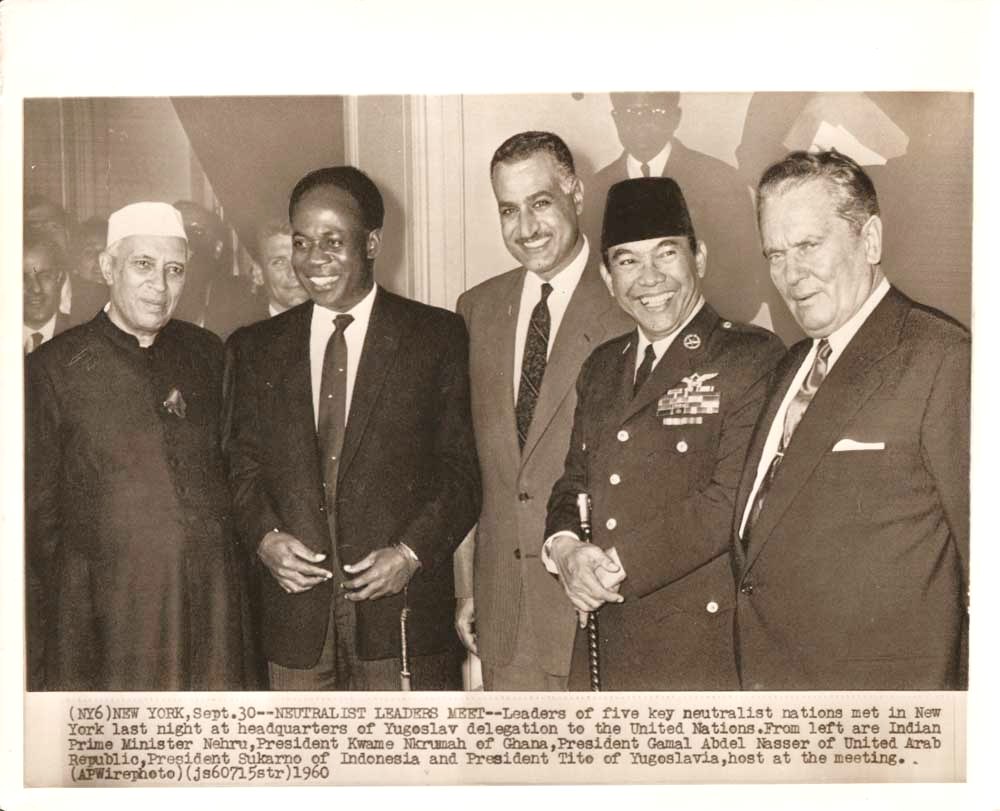
Fig. 04: Leaders of the non-aligned movement, 1960 in New York (Jawaharlal Nehru, Kwame Nkrumah, Gamal Abdel Nasser, Sukarno, Yosip Tito), Intellivoire – Portal ouverte sur l’Afrique, Sommet Asie Afrique 60 ans après la conférence de Bandung, avril 20, 2015, https://intellivoire.net/sommet-asie-afrique-60-ans-apres-la-conference-de-bandung/.
Seeking to learn from other empires: the German colonial officer Glauning translated into German this British manual for military expeditions in Africa.
The era of colonialism was also an era of nationalism, where the countries of Europe sought to differentiate themselves from each other and highlight their distinctiveness. Were Germany, Britain, or France any different from other colonial nations in their conduct of war? Menger: Precisely this question is at the heart of my investigation. The answer is that there are great similarities in terms of warfare. The main differences come at the level of rhetoric, as the colonial powers strove to create a flattering self-image. Did the colonial powers share the same ideologies? Menger: They certainly shared the same racist attitudes. And springing from this, they had the same conception of how to treat their colonial subjects. Moreover, the exchange of information between colonial nations on subjects like warfare was important. In the early days of German colonial rule in the 1880s, for example, there were people like Hermann von Wissmann, who founded and moulded the colonial army in German East Africa, the largest of the German colonies. Wissmann had previously acquired experience in the service of King Leopold II of Belgium in the Congo. Incidentally, the Belgian Congo, as the colony later came to be called, is something of a misnomer, as British, French, and Dutch and other actors also played roles there. Colonial rule was always a very transnational enterprise. The historians Jonas Kreienbaum from the University of Rostock and Christoph Kamissek use the term ‘imperial cloud’ in this context. It describes the phenomenon very nicely, I think. ‘Cloud’ as in the internet cloud? But 130 years ago? Menger: It’s about the metaphorical idea that there is a knowledge base that can be accessed in a certain way from various empires. It is not limited to national borders. Although it’s often unclear where, by whom, and when this knowledge is accessed, it’s there and it spreads, like in the online cloud. Many people know precious little about the violence Germany exercised as a colonial power. Is that a problem? Why should people engage with the subject? Menger: It’s a phenomenon that helped shape the present. Our world of nation states and our global dependency dynamics. Understanding this legacy is a positive thing. If we accept that a culture of remembrance is valuable because we want to live in a democratic civil society, then it’s important to engage with our own history – including injustices that were committed in the past. This is something Germany has done quite successfully with the history of the Third Reich. And I think it’s worthwhile to come to terms with colonial injustices as well. Furthermore, there are growing numbers of people living in Germany for whom the violence of the colonial past is not something they can just ignore. For many immigrants – from Africa, for example – it is part of their own history, or at least the history of their ancestors. In this context, too, it’s important to have a shared culture of remembrance. There are some people who think that German historians and politicians have focused quite enough on violence during the Nazi dictatorship. Won’t people switch off if we start focusing on violence in the German colonial period as well? Menger: I’ve no doubt that there will be resistance. But it's not a valid argument, I think, to say that we’ve faced up to the Nazi period, so now we’re done. After all, when a society has successfully come to grips with one era of history, why should it not do the same for other periods?Wissmann‘s famous colonial handbook, published 1895. Already on its first page, it recommended its readers to study the British colonial wars.
Here everything seems that was still under construction and it is suddenly ruin.-Caetano Veloso Che Guevara once stated that Africa was ‘imperialism’s weak link’[2] with enormous revolutionary potential. Indeed, liberation wars and decolonisation processes on the continent enabled the Western and Eastern blocs to perceive some regions and geopolitical conditions as opportunities to expand their influence. The most famous conflicts in Africa during the Cold War, direct results of the logics of proxy war, exemplify this: the Congo Crisis, the Angolan Civil War and the South African Border War. Amidst this allegedly cold clash between the two blocs, an often-forgotten third force emerged, the Non-Aligned Movement, created by the pioneering efforts of Tito (former Yugoslavia), Nkrumah (Ghana), Sukarno (Indonesia), Nasser (Egypt) and Nehru (India). This paper departs from the ‘forgotten’ legacies of the Third World[3] and its practices of solidarity, delving into the phenomenon of Yugoslavian technical cooperation as a vehicle for its soft diplomacy towards Africa. I consider the Yugoslav-African entanglement by focusing on expertise, transnational networks, Cold War geopolitics and Non-Aligned cooperation, which allows me to draw on ‘the connections and exchanges, on the back and forth of people, ideas, and things across boundaries’[4], from ‘macro’ to ‘micro’ and back again. A key macro-concept here is peripheral modernity,[5] which refers to all Global South, Second and Third World nations during the Cold War. I focus on Guinea-Bissau from 1973-1983, analysing its modern architecture and public sculpture in terms of the conditions of its emergence, its aesthetic-symbolic meanings and its deterioration. In post-independence Africa, following the modernist credo, construction and infrastructure became key means through which these young nations addressed social problems and expressed their national identities.[6] Guinea-Bissau was no different. Given that history is ‘inscribed’ in architecture and public art, they are suitable entrances to study and access the complexities, difficulties, contradictions and dilemmas this country experienced from 1963 (the year of the beginning of the armed struggle for independence) to 1983 (the approximate date of the complete dissolution of the socialist project and the subsequent economic liberalisation). I aim to challenge the narrative insisting that former colonies in Africa, once postcolonial, became merely the passive recipients of technical, architectural and cultural knowledge. Despite being an extremely young, sovereign country that has also suffered coups and civil war, Guinea-Bissau developed its own modernity. However, its post-colonial modernist architecture has received little attention.[7] Is this because modern buildings there ‘are often the result of isolated acts and do not correspond to the development of any architectural culture with local roots’,[8] as Ana Vaz Milheiro has sustained, implying that they are nothing more than isolated cases? Manoel Herz implies the same: ‘We consciously decided not to document the former Portuguese colonies as their independence took place in the mid-1970s and was mostly characterized by bitter conflict and long wars that overshadowed any kind of national development’.[9] He continues, stating that ‘while examples of Late Modernist architecture certainly exist in Lusophone Africa […] they were built entirely during the colonial era without preempting the intention of decolonization’.[10] In the next section, I reveal the falsity of these last three claims with reference to a Yugoslavian-influenced modernist architectural legacy in Guinea-Bissau that flourished – and deteriorated – very rapidly. Beyond the undisputable but overlooked Yugoslavian influence and the simplistic corollaries of ‘architectural export’ and ‘knowledge transfer’, could Bissau-Guineans have played an active and decisive role in establishing a modern architectural legacy in their country between 1973 to 1983?
Image 1: Total of students from the African Party for the Independence of Guinea and Cape Verde (PAIGC) who concluded their studies abroad between 1963-1975. Data gathered by Sonja Borges, Militant Education, Liberation Struggle, Consciousness.The PAIGC Education in Guinea Bissau 1963-1978 (Bern: Peter Lang, 2019),99.
Thus, ‘modernism’ pervaded new contexts in the name of ‘knowledge transfer, overseas aid and new forms of cooperation’[17] and through gift-giving, credit and barter.[18] Yet, the idea of mere ‘export’ is misleading. ‘Modernism’ is not exclusive to Western powers. Third World countries have developed their own modernities with a considerable degree of autonomy. The neglect of these modernities and fair assessments of their autonomy highlight the problem of coloniality in the act of making biased history – and even to (induced) oblivion as a convenient political project. Considering Guinea-Bissau, three understudied historical figures are relevant to my argument: Alberto ‘Tino’ Lima Gomes, the first Minister of Public Works[19] and a local who studied architecture and engineering in Yugoslavia on scholarship;[20] his wife, Yugoslavian architect Milanka Lima Gomes, who designed a number of buildings and public monuments as a naturalised Bissau-Guinean; and Nikola Arsenić,[21] a Yugoslavian architect who worked under a long-term technical cooperation agreement and was very prolific while living there. I won’t analyse all their buildings. The point is, rather, to infer a ‘forgotten’ legacy from a selection.Image 2: African scholarship holders in Slovenia (trip to Velenje), 1963. From the photo collection of the Museum of Yugoslav History.
One of these notable constructions is the memorial building for the unilateral declaration of independence (image 3), planned and coordinated by both Alberto and Milanka Lima Gomes, consisting of a functional rotunda[22]with a vernacular thatched roof made from cibe palm trees (borassus aethiopum), bamboo and straw, it was built to officialise the unilateral declaration of independence. This event was celebrated on top of the hill near Lugadjol on 24 September 1973.[23] The construction occurred during the rainy season, against the odds, and was completed in less than three months. Apart from the practicality that the vernacular roof offered under those challenging conditions, there is another layer to consider, that of an aesthetic statement: hybridism. This is much less evident – or practically absent – in the buildings and sculptures yet to be discussed, but I’ll address that question later.Image 3: Memorial building for the unilateral declaration of independence of Guinea-Bissau on 24th September 1973, Lugadjol, east of Boé.
Surely more ambitious and formally inventive is the former presidential residence, which is located on Bubaque Island in the Bijagós archipelago and is now falling into ruin (image 4). Despite its deceivingly brutalist appearance, the concrete structure was originally painted white and was covered by bituminous sheets. This body of architectural work here presented can be seen as a creative ingestion and digestion of foreign architecture, meaning that not only a mere borrowing of white modernist forms and solutions took place, but that a local appropriation, interpretation and transformation of the modernist vocabulary also occurred, amounting to an original, hybrid architecture worth documenting and preserving.Image 4: Luís Cabral’s house in Bubaque island. State-funded and designed by Milanka Lima Gomes (1976) and Nikola Arsenić (1978). Still from © The Vanished Dream 2016
Except for the memorial building (image 3), there is nothing in these structures that makes them unmistakably ‘African’, I admit, but aesthetically, they clearly reflect pan-Africanism and Non-Aligned modernity. This, in itself, in a former Portuguese colony, already makes them original. Contradicting Manoel Herz, they were not built in the colonial era and do preempt and reflect ‘the intention of decolonization’. Compared with Ghana’s architecture of 1961-1970 (a country that, by the way, also received Yugoslav architects under technical cooperation agreement), their affinities and autonomous character become evident: a mix of ‘Eastern European modernism’,[24] ‘tropical architecture’ and vernacular elements, ‘they cannot be reduced to a sum of European ‘modernisms’.[25]Image 5: RTP África building / Namintchit restaurant, Bissau, 1976. Designed by Nikola Arsenić. Photo by © M.M. Jones ( instagram: @Bauzeitgeist ), November 2018
Image 6: Summit buildings ("cimeira"), Bissau, 1979, today partially in ruins. State-funded and designed by Nikola Arsenić; supervision: Armando Napoko; decoration: Maria Aura Troçolo; coordination: Milanka Lima Gomes. Still from © The Vanished Dream 2016.
The public sculptures, on the other hand, are, visually speaking, ostensibly ‘Yugoslavian’ and do not reference the rich and diverse local arts of Guinea-Bissau in any way (image 7). Nationalists deployed modern European aesthetics to represent emancipation: a paradox?[26] From an art-theoretical perspective, these sculptures are ‘modernist’ in the worst way; they plainly ignore their surroundings and their socio-cultural implications. In short, they do not take ‘context’ in consideration, a prerequisite of public art since the 1960s. Monuments, even more than the architecture of the period, raise the complex question of independent Africa’s hasty belief in ‘development’ and whether such belief has been beneficial to the new nations (a question that Amílcar Cabral himself, as an ‘assimilated’ local of Cape-Verdean parents, Marxist thinker and agronomist, embodied in unresolved ways).[27] If ,however, one considers the University of Ife, later renamed Obafemi Awolowo University, in Nigeria, in which Israeli architect Arieh Sharon attempted to marry modern architecture with an African visual vocabulary to the verge of stereotype, the abstract, pretentiously transcultural Yugoslavian design is arguably preferable, since it does not fall into the trap of white appropriation of another culture. Bissau-Guinean architecture and public sculpture discussed here are thus more honest. Mojca Smode Cvitanović wrote that Non-Aligned mutual cooperation ‘lost its enthusiasm’ from the early 1970s onwards,[28] though Guinea-Bissau appears to be an exception. In 1979, Fidel Castro became the new chairman of the Non-Aligned Movement, and Tito died a year later. The movement’s credibility decreased during the 1980s, coinciding with a successful coup in Guinea-Bissau. With the end of socialism in Eastern Europe in the early 1990s, the definition of ‘non-alignment’ finally changed entirely. Canonical architectural historiography, however, didn’t fully catch up with either Yugoslav or African architecture – an oversight that reveals an unfortunate prolongation of Cold War logics long after its end.[29]Image 7: Monument for the Martyrs of the Pidjiguiti Massacre, known as Mon di Timba (‘the fist of Timba’), a public sculpture located in the country’s capital, Bissau, state-funded and designed by Nikola Arsenić (1975-1978). Building technique: reinforced concrete covered with slate sheets. Still from © Memória / Calling Cabral, directed by Welket Bungué.
Modernist practices from 1973-1983 were decidedly not merely ‘a projection from outside’. On the contrary, the rapid (even if fragile) consolidation of modernism in Guinea-Bissau has been a process where locals have worked actively to make themselves modern, instead of merely being made modern by outside forces. The principal actor coordinating all the construction projects in the country during the period was Bissau-Guinean-born, the Minister of Public Works Alberto ‘Tino’ Lima Gomes. The Yugoslav fundamental participation notwithstanding, local agency was decisive and shouldn’t be overlooked. Now, what unspent fuel remains from the anti-colonial struggle and the early post-independence days to be reignited today? Or, more modestly and realistically: how can scholarly work and intellectual engagement counteract oblivion as a convenient political project? Because pan-African, socialist and Third World dreams, visions and abandoned projects might have a contemporary ‘utility’ or usefulness; they can be unearthed to be remembered, retold, reclaimed, redreamed and thus inform our political imagination. As it was shown, the unfulfilled promises of the 1973-1983 period are aesthetically latent in the ambivalent documents of the era, be they buildings, memorials or propaganda. Simultaneously ‘cultural’ and ‘barbaric’, it falls on posterity not to allow the latter to prevail. [1] The author would like to thank Ben Kamis , Nikolai Brandes, Anna Sophia Nübling, Welket Bungué, Milanka Lima Gomes, Nikola Arsenić (the son), Radovan Cukić, Matthew Jones, Juan Betancor, Lars Rudebeck, Doreen Mende, Viviane Letayf and Geraldo Pina. [2] Ahmed Ben Bella, ‘Che as I Knew Him’, Le Monde Diplomatique, October 1997, https://mondediplo.com/1997/10/che. [3] According to Duanfang Lu, ‘compared with other alternative phrases such as “developing countries”, “less developed countries”, “non-industrialized countries”, and “the South”, the Third World is more than merely a socio-economic designation. It has come to represent a forceful ideology, a meaningful rallying point, a widely shared mentality, and a unique source of identity. The phrase has proven rhetorically, politically, and theoretically effective. Despite the end of the Cold War, the term “Third World” remains viable in contemporary geopolitical vocabulary, as seen in leading scholarly journals such as Third World Quarterly and Journal of Third World Studies’ Lu Duanfang, Third World Modernism: Architecture, Development and Identity (London: Routledge, 2010), 19, 20. [4] In: Sebastian Conrad, What Is Global History? (Princeton/Oxford: Princeton University Press, 2016), 42. [5] See my ongoing curatorial project: https://ifddr.org/en/cooperations/unvollendetes_museum/ [6] Perhaps the best example is the case of Ghana under Kwame Nkrumah. An important influence on Amílcar Cabral’s thinking even, Nkrumah’s modernity sought to redefine African subjectivity, prioritising African unity over ethnic division. [7] A commendable survey can be found in: Phillip Meuser and Adil Dalbai, ‘Guinea-Bissau’, Architectual Guide. Sub-Saharan Africa. Western Africa. Along the Atlantic Ocean Coast 3 (2021): 12–67, but it’s the only one of its kind and far from exhaustive. [8] Full quote here: ‘Modern buildings in these three African provinces [Cape Verde, Guinea-Bissau and São Tomé and Príncipe] are often the result of isolated acts and do not correspond to the development of any architectural culture with local roots’ In: Milheiro Ana, ‘Resisting Modernity: Colonization and Public Works. Cape Verde, Guinea-Bissau and São Tomé and Príncipe’, in Ilha de São Jorge, ed. Paula Nascimento and Stefano Pansera (Beyond Entropy Books, 2014), 178. [9] In: Manuel Herz, ed., African Modernism: The Architecture of Independence. Ghana, Senegal, Côte d’Ivoire, Kenya, Zambia (Zürich: Park Books, 2015). [10] In: Herz. [11] Brazilian educator Paulo Freire, for example, was consulted by Guinea-Bissau’s first independent government on how to optimise the processes of attaining literacy on a national scale, among other complex dilemmas. See: Sérgio Haddad, O Educador: Um Perfil de Paulo Freire (São Paulo: Todavia, 2019); See also: Paulo Freire, Pedagogy in Process: The Letters to Guinea-Bissau (London: Bloomsbury, 2016) See also Augusta Henriques, an important educator and follower of Paulo Freire’s methods: https://en.wikipedia.org/wiki/Augusta_Henriques. [12] Already in 1967, Amílcar Cabral sent four young Bissau-Guineans to Cuba to study cinema at the Cuban Institute of Cinematographic Art and Industry (ICAIC), namely José Cobumba Bolama, Josefina Crato, Sana Na N’Hada and Flora Gomes, who studied under Santiago Álvarez, a fact that reveals Cabral’s vision for national cinema. Sana Na N’Hada completed his important film O Regresso de Amílcar Cabral in 1976. More on Guinea-Bissau’s audiovisual production since independence, see: Cunha Paulo and Catarina Laranjeiro, ‘Guiné-Bissau: Do Cinema de Estado Ao Cinema Fora Do Estado’, Rebeca - Revista Brasileira De Estudos De Cinema e Audiovisual 5, no. 2 (2017). [13] Good examples include José Carlos Schwarz and the band Super Mama Djombo. Bissau-born poet and musician José Carlos Schwarz (1949-1977) was politically active and even joined the resistance. He was imprisoned for his participation in the struggle for independence. Following independence in 1974, Schwarz became the director of the Department for Art and Culture and became responsible for Guinea-Bissau’s youth policy. Super Mama Djombo was a band from Guinea Bissau, formed in the mid-1960s. They would often play at President Luís Cabral’s public speeches, and their concerts were broadcast on live radio. In 1980, Luís Cabral was ousted, and the new regime under Nino Vieira no longer supported the band. They had fewer opportunities to perform and broke up in 1986. [14] ‘Industry in [Portuguese Guinea] was particularly underdeveloped: some factories for rice peeling, some for the extraction of fish oil and peanut oil, a few ice factories and small workshops for automobile repair, locksmiths and wood cutting, as well as distilleries for alcoholic beverages. There were no industrial companies owned by the colonizers for the exploitation of land or natural wealth: the colony’s large economic share was based on native agriculture, the acquisition of its surpluses and the organisation of internal and external trade. The level of industrialisation was close to zero, as was its economic value’. (my translation) In: Cátia Teixeira and Maria Augusta Tavares, ‘Guiné-Bissau: O Presente Lança Luz Sobre o Passado’, Diálogos Magazine, no. 3 (2013): 869–908. [15] Original quote here: ‘O primeiro período [1974-1983] é característico, porque o país, praticamente durante 10 anos, teve apenas quatro quadros formados em arquitectura e construção civil.’ In: Milanka L. Gomes, ‘Reconstrução Nacional e Balanço Das Principais Ações Realizadas Entre 1974 e 1996 Na Guiné-Bissau Bissau’ (CIALP conference intervention, 1996), Private Document. [16] In: Sonja Borges, Militant Education, Liberation Struggle, Consciousness.The PAIGC Education in Guinea Bissau 1963-1978 (Bern: Peter Lang, 2019), 98, 99. [17] In: Duanfang, Third World Modernism: Architecture, Development and Identity, 26. [18] In: Łukasz Stanek, ‘Gift, Credit, Barter: Architectural Mobilities in Global Socialism’, Archive and Editorial Project, E-Flux Architecture (blog), 2020, https://www.e-flux.com/architecture/housing/337850/gift-credit-barter-architectural-mobilities-in-global-socialism/. [19] In: ‘Boletim Oficial Da República Da Guiné-Bissau, Numero 40’, 11 October 1978, Fundação Mário Soares, Arquivo Mário Pinto de Andrade, http://www.casacomum.org/cc/visualizador?pasta=10249.003. [20] He went to Yugoslavia to study through a scholarship support and returned with heavy luggage and an engineer/architect diploma after independence.’ (my translation). In: Graça Tabanca Graca Luís, ‘Caderno de Notas de Um Mais Velho’, Blog, Luís Graça & Camaradas Da Guiné (blog), 9 November 2016, https://blogueforanadaevaotres.blogspot.com/2016/11/guine-6374-p16700-caderno-de-notas-de.html. [21] See Nikola Arsenić’s short bio in: The Vanished Dream (Siddhartha Films, 2016), http://thevanisheddream.com/category/cast/. [22] Interestingly, according to Geraldo Pina, “in Guinea-Bissau, circular houses have often been regarded as representative habitat of the native population.” In: Meuser and Dalbai, ‘Guinea-Bissau’, 26. [23] Recognition became universal following the 1974 Carnation Revolution in Portugal. For a brief description of the unilateral declaration’s ceremony, see my own text: Lucas Rehnman, ‘Amílcar Cabral d’après l’art Conceptuel or The Liberation Struggle as Conceptual Art’, The Whole Life, 24 March 2022, https://wholelife.hkw.de/amilcar-cabral-dapres-lart-conceptuel-or-the-liberation-struggle-as-conceptual-art/#footnote13. [24] It would be false to speak of ‘“socialist modernism’”, because ‘“alleging a certain formal or visual essence of “socialist modernism” makes just as much sense as trying to identify inherent aesthetic features of a “capitalist modernism”, a label that no one but the most hardened socialist realist critic would take seriously, because it too broadly equates cultural and political categories’.” Vladimir Kulić, Wolfgang Thaler, and Maroje Mrduljas, eds., Modernism In-Between: The Mediatory Architectures of Socialist Yugoslavia (Berlin: Jovis Verlag, 2012), 17. [25] In: Łukasz Stanek, ‘Architects from Socialist Countries in Ghana (1957–67): Modern Architecture and Mondialisation’, Journal of the Society of Architectural Historians 74, no. 4 (December 2015): 416–42. [26] Full quote here: ‘Only in postcolonial history writing is agency sometimes attributed to Africans, but, even then, typically only to nationalists who, paradoxically, deployed a modern European architecture to represent emancipation.’ In: Ikem Okoye, ‘Where Was Not Modernism?’, CCA Articles, n.d., https://www.cca.qc.ca/en/articles/77238/where-was-not-modernism. [27] Regimes in the new African nations adopted the Enlightenment’s scientific heritage without any discussions of its cultural implications. This was problematic […] as the ‘machine was not neutral’. It could also be added that this was not only the case with the scientific heritage, but applied equally to the artistic heritage as well.’ In: Bojana Piškur, Southern Constellations: The Poetics of the Non-Aligned (Ljubljana: Moderna galerija, 2019), 16 and Piškur specifies the meaning of ‘machine’ as follows: ‘Machine as one of the instruments of cultural transformation that was brought to a space whose own cultural history had not prepared them for this new device’ a. And: ‘Colonialism brought the machine into spaces whose own cultural history had not prepared them for this new device, and besides, the machine and mechanization had been one of the instruments of cultural transformation. A machine is imbued with cultural forms; the tractor, for example, changes the relationship of farmers to their fields, each other, and the place of the plough in their cosmological world. The tractor would not leave […] social relations unchanged. […] The bulk of the social order inhabited the machine and grew around it’; In: Vijay Prashad, The Darker Nations: A People’s History of the Third World (New York: The New Press, 2007). [28] Full quote here: ‘The need for foreign personnel in developing countries was most stressing right after their independence, which was regularly and effectively accommodated by Yugoslavia, in line with its own political interests. The change in trends of technical cooperation, however, occurred in the early 1970s as a result of the events on both sides. In Yugoslavia, the living standard improved. The developing world, on the other hand, suffered a number of political and economic crises causing social instability. The generational shift and decentralization of Yugoslavia further weakened the integrity of the non-alignment policy, which lost its enthusiasm, proved to be less pragmatic than expected. This redirected technical cooperation towards partners who were able to secure economically and socially stable conditions for assignments.’ In: Smode Cvitanović, ‘Tracing the Non-Aligned Architecture: Environments of Technical Cooperation and the Work of Croatian Architects in Kumasi, Ghana (1961-1970)’, Histories of Postwar Architecture 3, no. 6 (2020): 34–67. [29] Full quote here: ‘Eastern European architecture as a whole has largely been left out of the discipline’s modern canonical history, an oversight that not only underscores an ongoing Eurocentric (Western) bias, but also reflects the prolongation of the cultural logic of the Cold War long after its end’. In: M. Stierli and Vladimir Kulić, Toward a Concrete Utopia: Architecture in Yugoslavia, 1948–1980 (New York: The Museum of Modern Art, 2018).Image 8: Commemorative stamp with Amílcar Cabral’s mausoleum represented, a monument located in Fortaleza de São José da Amura, Bissau, state-funded and designed by Zoran Jovanović, built in 1977.
Why did North Korea establish a close connection with Tanzania in the 1960s? Among several explanations for this neglected connection, I focus on North Korea’s disconnections with its socialist allies as its primary historical background condition. Then, I describe the earlier phase of North Korean-Tanzanian relations to demonstrate how the two countries understood and perceived each other as post-colonial socialist partners.Julius Nyerere and Kim Il Sung congratulating the actors and actresses after watching a musical <Song of Paradise> in Mansudae Art Theater (Rodong Shinmun March 28, 1981), photograph by the author.
For instance, references to anti-colonial and anti-imperial struggles were repeated in articles on Tanzania and Kim Il Sung’s speech when Tanzanian President Nyerere visited Pyeongyang in June 1968. The editorial of Rodong Shinmun on the day of Nyerere’s arrival in 1968 states that the peoples of North Korea and Tanzania were geographically distant, but they had both suffered from colonisation in the past and had a common denominator of struggle against imperialism and colonialism.[23] Rodong Shinmun published a half-page article on the history of Tanzania, from European colonialism’s suppression to its nation-building process after its independence in 1961.[24] It even mentioned the Maji Maji War as a prominent example of how Tanzanians fought against colonisers and emphasised that the anti-colonial struggle did not end in the 1960s, even after the independence of Tanganyika and Zanzibar, due to the permanent imperialist threat. Nyerere, who gained prominence throughout the socialist world with the 1967 Arusha Declaration, also considered North Korea as a favourable partner in 1968. A memorandum from the Australian High Commission in Dar es Salaam that evaluated that Nyerere’s interest in North Korea noted his appreciation for North Korea’s achievements, and that he took North Korea as a model to inform the Arusha Declaration.[25] Furthermore, Nyerere regarded North Korea and Tanzania relations as equals, without dominance, unlike the ‘implied inferiority’ of Tanzania in its relations with China. Following Nyerere’s visit to North Korea, the TANU Youth League invited North Korean experts to learn ‘the concept of a true social revolution’.[26] This invitation suggests Tanzania’s positive understanding of North Korea as an ideological leader of socialism, as it was the first invitation of external experts to practice revolutionary ideas, according to the Nationalist. Nyerere also visited Pyongyang twice more in the 1980s before he stepped down, and Ali Hassan Mwinyi (in office 1985-95) succeeded in the presidency in 1985.Julius Nyerere addressing a speech in front of a mass rally in Pyongyang (The Nationalist, June 27, 1968), photograph by the author.